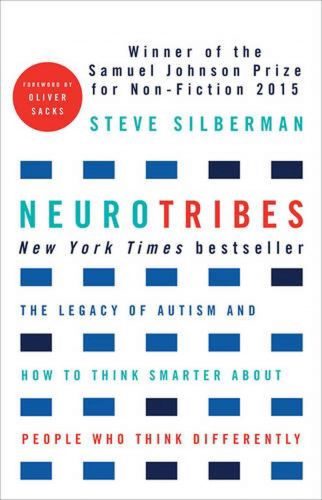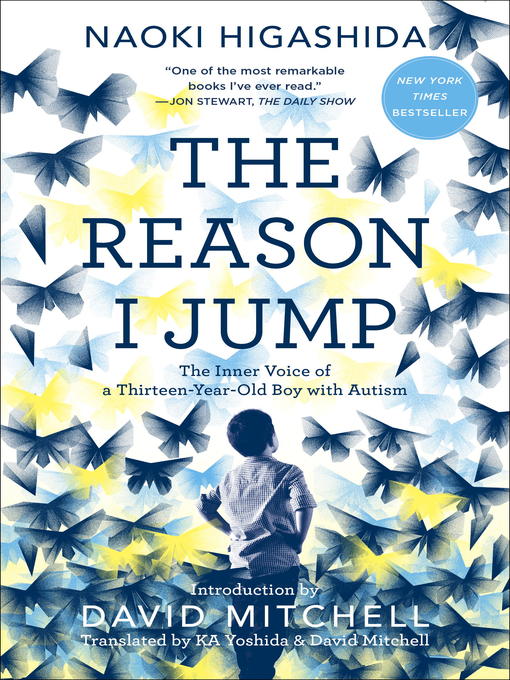
My daughter once asked me if I wished her brother wasn’t autistic.
My instinctive response was no, because his autism is inextricable from him and it is impossible to imagine who he would be without his neurological differences. I’m fairly sure that this was not the answer my daughter expected to hear, as she views autism predominantly as the cause of behaviour she finds difficult to tolerate and adapt to, but it is heartening to feel that the world as a whole is generally beginning to recognise that Different does not equate to Bad or Broken, and autism does not need to be Fixed. As Silberman concludes in his final chapter, ‘Just because a computer is not running Windows doesn’t mean that it’s broken’.
However, this is not a view that has been systematically held or encouraged until very recently, so I was excited to read this history of autism, written by a journalist who developed a fascination with autism that led him to interview autistic adults and children, searching for answers to an apparent rise in prevalence that has troubled many.
What’s it about?
The full sub-title of ‘Neurotribes’ is ‘The Legacy of Autism and how to Think Smarter About People who Think Differently’. Essentially, Silberman traces the history of the terms ‘autism’ and ‘Aspergers’ and examines how the meanings of these terms were proscribed and used, first, to systematically withhold and, later, to promote support for individuals. Enmeshed in this history are detailed, individual stories of children and adults to exemplify changing social attitudes and experiences, as well as a few portraits of innovative but socially isolated individuals who Silberman suggests may have been neurodivergent.
What’s it like?
Silberman is an effective storyteller but as such he creates heroes and villains in this tale of shifting definitions. Leo Kanner, who discovered autism, is criticised for protecting and promoting his syndrome in ways that narrowed diagnostic windows and portrayed parents negatively, while Hans Asperger, who discovered Aspergers Syndrome, is praised for apparently trying to protect his ‘little professors’ by focusing on their potential in an effort to save (some of) them from the Nazi eugenics programme. (Since publication of ‘Neurotribes’, many scientists have pointed out that reality was perhaps not so straightforward, and Aspergers Syndrome has vanished as a disorder from the latest edition of the DSM, the manual that lists all ‘official’ disabilities, syndromes, illnesses, etc.)
Regardless of these quibbles, I found this a very interesting read as Silberman outlined key developments in the history of autism, especially the furore sparked over childhood vaccination in the UK and the often disturbing history of the ABA movement (a strategy of intensive re-education aimed at erasing perceived autistic traits in order to make autistic people appear to be neurotypical). As a parent to an autistic child and sibling to autistic adults, I found it difficult to read the section about eugenics and parents wanting to be rid of their disabled offspring, but as always Silberman uses a factual tone that made reading about these brutalities simultaneously more horrifying but also easier than a lot of vivid adjectives!
‘All in all, the insidious illusion that autism is a historical aberration – a by-product of the toxic modern world – has contributed to an astonishing neglect of the needs of autistic adults and their families.’
It was hard at many points to read about the callous and brutal experimentation endured by children and adults as scientists endeavoured to ‘fix’ their ‘condition’. It is astonishing what researchers were allowed to do in the name of science and so disturbing to think that my family members have avoided this kind of treatment by virtue of their date and place of birth, rather than their essential humanity.
My main takeaway from the whole book was that autism has always existed, it was just called other things, so the panic over apparent increases in diagnosis are encouraging campaigners to focus their energies on problems perceived to increase rates of diagnosis (increased chemicals in local tap water, for instance) instead of focusing on problems that could improve the quality of life for autistic people (more and better alternative provision, for instance, or research into epilepsy in autistic people, which presents itself differently and is the second leading cause of death in intellectually disabled autistic people).
Final thoughts
I found ‘Neurotribes’ to be an interesting look at the history of the diagnosis of autism and the changing social perceptions of it. However, the book leaves us with a puzzle that may partly explain why both Kanner and Aspergers presented a particular variant of autism as the public face of the ‘disorder’: Silberman concludes his book by noting that, ‘Most researchers now believe that autism is not a single unified entity but a cluster of underlying conditions.’ Given this vast spectrum, how useful is the term ‘autism’? Within my own family there is a range of autistic experience, including people with very different support needs – which leads me on to my second niggle.
Silberman discusses the film ‘Rain Man’ as a turning point for autistic representation and culture, and spends much time discussing how quirky, focused white men have created technologies that benefit the world. This lies at the heart of his suggestion that we embrace what he calls neurodiversity, but sometimes autism is a devastating condition; not all autistic people are savants; all people have intrinsic worth and should be valued regardless. It would have been good for Silberman to explicitly recognise this before the afterword and reinforce this basic notion that all lives are important, rather than focusing so strongly on the value that technically minded cognitive geniuses can bring to us. Perhaps this is why Silberman represents Hans Asperger so positively: at heart, they share an admiration for the intellectually supercharged ‘little professors’ that doesn’t naturally extend to the intellectually disabled.


